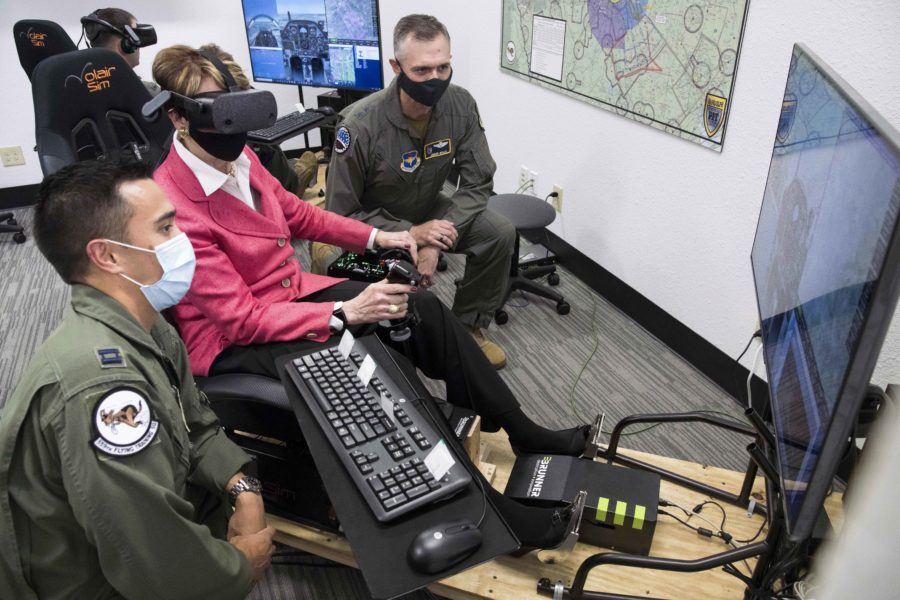Air Education and Training Command has incorporated a focus on human performance optimization—which includes personal resilience, health, fitness, diet, and mental performance—into its Undergraduate Pilot Training 2.5 program, 19th Air Force Commander Maj. Gen. Craig D. Wills said at the Air Force Association’s virtual Aerospace Warfare Symposium.
UPT 2.5, which he characterized as the command’s answer to a charge from former Air Force Chief of Staff and now retired Air Force Gen. David L. Goldfein to scale its Pilot Training Next program, launched last July with a focus on “four proven concepts,” Wills said:
- Parsing out educational content to individual students according to the paces at which they learn, instead of divvying it up to everyone on an identical—but not necessarily efficient—schedule.
- Developing and leveraging “immersive training devices” that leverage tools such as artificial intelligence and virtual reality to make training more personalized.
- Teaching in a way that focuses on the learner
- “Quality instruction at an acceptable [instructor pilot]-to-student ratio”
But following the program’s summer rollout, AETC officially added the “Comprehensive Readiness for Aircrew Flying Training initiative” as a fifth tenet of UPT 2.5, Wills announced during a pre-recorded “Training for War” panel that aired Feb. 26.
CRAFT’s official mission is to “instill 21st century aviators with a holistic approach to human performance optimization, beginning in Undergraduate Flying Training and evolving throughout the Airman’s career, targeting the physical, cognitive, and resilience domains,” 19th AF spokesperson Aryn C. Lockhart wrote in an email to Air Force Magazine. More specifically, CRAFT aims to generate better “student learning outcomes,” make aircrews more resilient and less injury-prone, and to maximize the way these Airmen perform, she wrote.
“Current CRAFT personnel include aerospace physiologists, strength coaches, mental performance coaches, and a dietician,” she wrote.
In the long run, Lockhart wrote, CRAFT looks to make the Total Force more lethal and combat-ready.
The initiative was in the cards for UPT 2.5 since before the new training program launched, but became operational in October, she noted.
The endeavor, which follows similar efforts by Air Combat Command and Air Force Special Operations Command, “promises a lot of potential for us,” Wills said.
“It just seems obvious that rather than waiting for our lieutenants to go out and get broken in the MAJCOMS and then fixed, why don’t we start from the very beginning, with a nutritionist, a strength coach, cognitive specialists?” he said. “Let’s build a better human, a more resilient, more adaptable, a better thinker, and let’s build that into pilot training from the beginning.”
